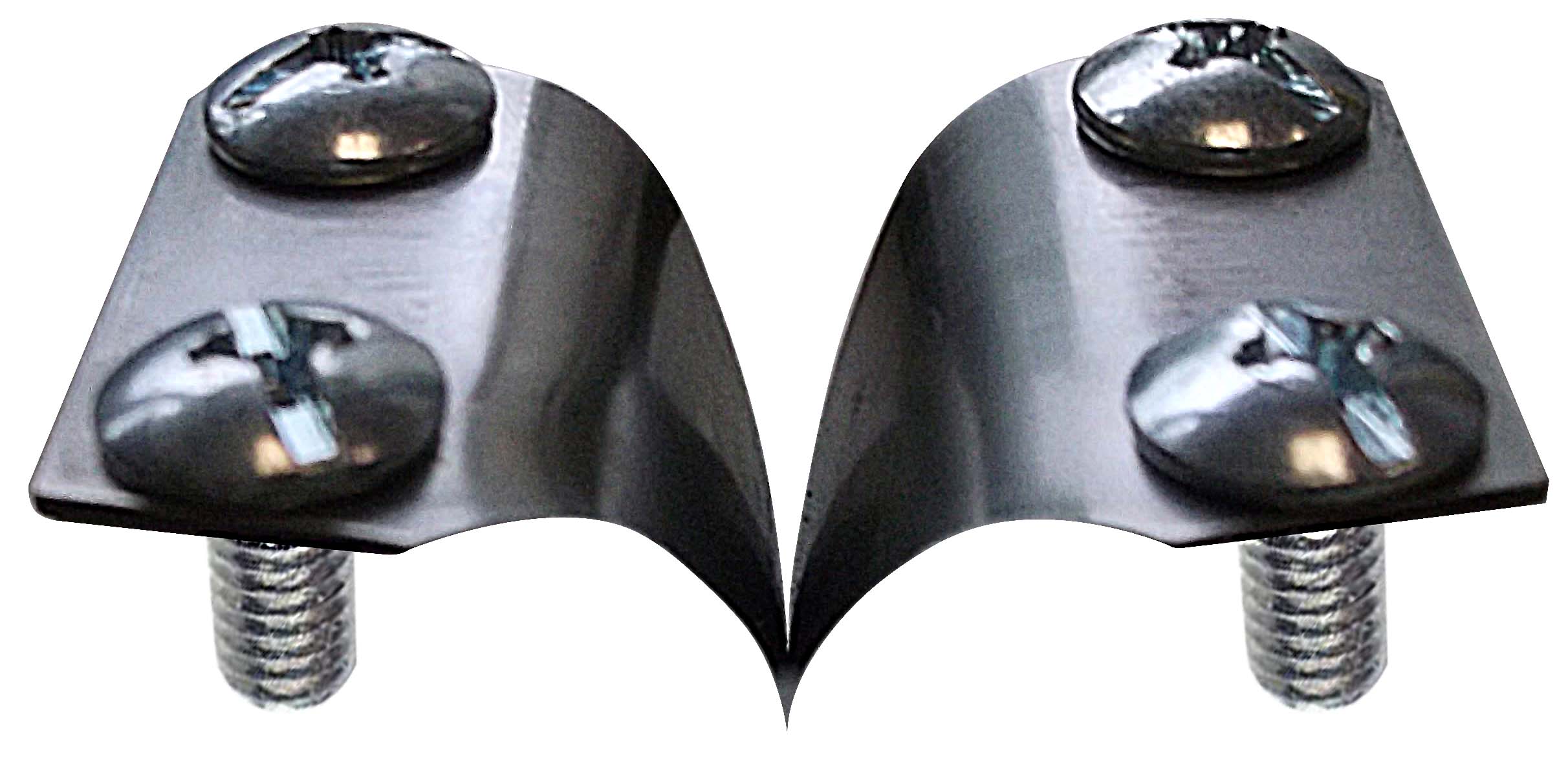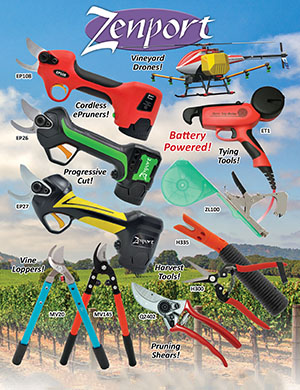If you looking for a reliable and durable replacement blade for your ZJ68 grafting tool, then you need the Zenport ZJ68A Grafting Tool Replacement Blade!
 The Zenport ZJ68A Grafting Tool Replacement Blade is a high-quality steel hardened “V” cut blade that makes clean cuts on both scion and root stock.
The Zenport ZJ68A Grafting Tool Replacement Blade is a high-quality steel hardened “V” cut blade that makes clean cuts on both scion and root stock.
It is compatible with the Zenport ZJ68 V-Cut Top Grafting Tool, which is a versatile tool that can handle wood from 1/8 inch to 1 and 3/16 inch, for both soft and hard wood.
The blade can be removed, sharpened or replaced as needed.
The Zenport ZJ68A Grafting Tool Replacement Blade is ideal for grafting fruit trees and vines, which can improve your yield, quality and variety of fruits. Grafting can also help you save space, time and money by combining different plants on one root system. Whether you are a landscape professional, a hobby gardener or a farmer, you will love using this blade to create perfect grafts every time.
To take care of your grafting tool blade, make sure to clean it after each use with a dry cloth or paper towel. Store it in a dry place away from moisture and corrosion. Sharpen it regularly with a fine whetstone or file to maintain its edge.
The product dimensions of the Zenport ZJ68A Grafting Tool Replacement Blade are 2 x 0.5 x 0.1 inches. It weighs 0.32 ounces and has a cutting capacity of up to 1 and 3/16 inch.
Don’t miss this opportunity to get your hands on this amazing replacement blade that will make your grafting experience easier and more enjoyable. Order yours today before they run out of stock!
But don’t just take our word for it. Here are some testimonials from happy customers who have used this product:
- “I bought this replacement blade for my Zenport grafting tool after I lost my original one. It works great! It cuts smoothly and fits perfectly on my tool. I use it to graft apple trees in my backyard and I’m very pleased with the results.” - John D., Washington, USA
- “This is a must-have for anyone who does grafting work. The blade is sharp and sturdy, and it makes compatible cuts on both scion and root stock. I have used it to graft citrus trees in my orchard and I have seen an improvement in fruit quality and quantity.” - Maria S., Florida, USA
- “I love this replacement blade! It’s easy to install and remove, and it’s very affordable compared to other brands. I use it to graft roses in my garden and they look beautiful.” - Lisa K., California, USA
What are you waiting for? Get your Zenport ZJ68A Grafting Tool Replacement Blade now!
Zenport ZJ68 V-Cut Top Grafting Tool Operation
- Place rootstock up under skirt of blades with the rootstock positioned to the right hand side of Zenport ZJ68 V-Cut Top Grafting Tool to ensure the female V is in the rootstock.
- Holding rootstock in both hands depress the pedal down and bringing blades and wood down onto centre anvils. Ensure the rootstock is brought down into the grooved area of the anvils.
- As the blades slice through the wood gently, pull either side of the rootstock outwards away from the blades ensuring a clean cut.
- Once this initial cut to the rootstock is completed choose a your scion wood which fits the diameter of the rootstock.
- Repeat cut ensuring that this cut is reversed with bud of Scion wood positioned to the left hand side of Zenport ZJ68 V-Cut Top Grafting Tool.
- Once both cuts are completed, place the scion wood inside the V of the rootstock and tape all areas of the graft to protect cut and reduce air. This will ensure maximum cambium contact giving strong, tidy grafts.
- Re-sharpening and polishing of the blades regularly will preserve blade condition.
Holding the Grafting Stock
It is recommended that when grafting the rootstock this should be held in two hands. The rootstock should be held on the side of the stock firmly between thumb and forefingers of each hand. Ensure fingers are a safe distance from the blades as the cut is completed. As the cuts is made the operator should pull hands outwards helping the graft to separate.
As the cut is completed, the operator should help the cut separate. The operator fingers should never touch the anvils or blades while cutting action is performed.
Bud cutting/scion should be performed with fingers either side of the bus ensuring again that the fingers do not touch the anvils or blades as the cut is completed.
Sharpening Blades
Remove from the machine and sharpen. Pay particular attention to tip area. We suggest that the best method to sharpen is to simply polish blade face and edge with a fine grade wet and dry sand paper, and to lightly steel with ordinary kitchen knife steel.
Blade Angle
Reposition blades to machine. Adjust blade angle e.g. bottom in or out. There is no set position for this and is purely an operator adjustment. An operator once familiar with sharpening and installing blades will be aware that when adjusting this angle a difference in cut can be detected. This is at times advantageous when grafting various sizes of wood.
Blade Installation Procedure
Fit blades to machine, at this stage do not fully tighten screw. Hold blade tips together and tighten screws evenly until the blades barely tension. Place thumb and forefinger under the face of blades and hold blades in an upward position. Slightly tighten the two bottom screws while maintaining this upward pressure. Slightly tighten the two top screws. Repeat the procedure until blade screws are tight. It is not necessary to over tighten blade screws.
Dress Blade Tips
As blades (which are under tension) settle it is not uncommon on some woods to leave a slight chipped effect on the rootstock. This is due to a slight spreading effect of tips. To over come this, dress the front of the blade tip area with a fine file. Once this has been completed sand the blades placing emphasis in the tip of the blade and area making the cuts.
For sanding we recommend using light sandpaper such as wet and dry P400 that has been dipped in methylated spirits. Using methylated spirits will breakdown the sap build up on blades and ensure a clean cut of grafting stock.
Check Anvil Alignment
Male anvil should be slightly proud of V anvil. If this is not so, remove the anvil and hold extended section in vice and form.=
Remove Blades
Zenport recommends that blades on the tools are removed or loosened at the end of each grafting season. The Zenport blades work under tension and if left on tools for extended periods will loose blade tension causing blades to "split" as cuts are executed and discontinue to complete cuts as previous.
To Reset Blades
- Initial attachment of blade is to be that of blade closest to shaft. Place both screws in loosely. Tighten top screw first by applying pressure to blade to push the top of blade in an outward movement and bottom of blade inwards.
- Repeat process with blade closest to operator. Before tightening this should be held slightly proud of first blade. As screws are tightened the blade will drop in to place forming a "V" ready to perform cuts. Note Do not over tighten screws, as they will be removed repeatedly.
- Affix attach female anvil loosely then move blades to the lowest position. Centre female anvil to the point of the blades then tighten female anvil.
- Once more move blades to the lowest position and affix the male anvil. Centre this so that as blades do not touch anvil as manoeuvred.
- Slowly release blades from lowest position ensuring that no part of the blade touches anvils as the knife carriers moves. Trial cut with no grafting stock again ensuring that no part of the blade touches anvils.
- Trial cut with unwanted stock. If blades do not complete cut without touching blades reset male anvil positioning. Note if blades are continually hitting anvils blades will rapidly become blunt hindering the potential graft take.
Reasons for grafting and budding:
- Perpetuate clones. Clones of numerous species cannot be economically reproduced from vegetative cuttings because the percentage of cuttings that root successfully is low. For example numerous clones of Japanese maple that either root poorly or lack an extensive root systems are grafted onto the seedling of an Acer palmatum rootstock.
- Take advantage of particular rootstocks. Certain rootstocks have superior growth habits, disease and insect resistance, and drought tolerance. For example the French crabapple can increase resistance to crown gall and hairy root in apple trees.
- Increase the growth rate of seedlings. The seedling progeny of many fruit and nut breeding programs may require 8 to 12 years to become fruitful. However, if these progeny are grafted onto established plants, the time required for them to flower and fruit is reduced dramatically.
- Repair damaged plants. Large trees or specimen plants can be damaged easily above the soil line. The damage can often be repaired by planting several seedlings of the same species around the injured tree and grafting them above the injury.
- Change varieties or cultivars. Newer varieties of trees may offer improved insect or disease resistance, better drought tolerance, or higher yields. As long as the scion is compatible with the rootstock, the older orchard may be top worked using the improved variety or cultivar.
- Produce certain plant forms. Numerous horticultural plants owe their beauty to the fact that they are grafted or budded onto a standard, especially those that have a weeping or cascading form.
- Optimize cross-pollination. Certain fruit trees are not self-pollinating; they require pollination by a second fruit tree through cross-pollination. To ensure good fruit set on the female (pistillate) plant, a male (staminate) plant must be growing nearby. Where this is not possible, the chances that cross-pollination will occur can be increased by grafting a scion from a male plant onto the female plant.
- Unlike budding, which can be performed before or during the growing season, most grafting is done during winter and early spring while both scion and rootstock are still dormant.











